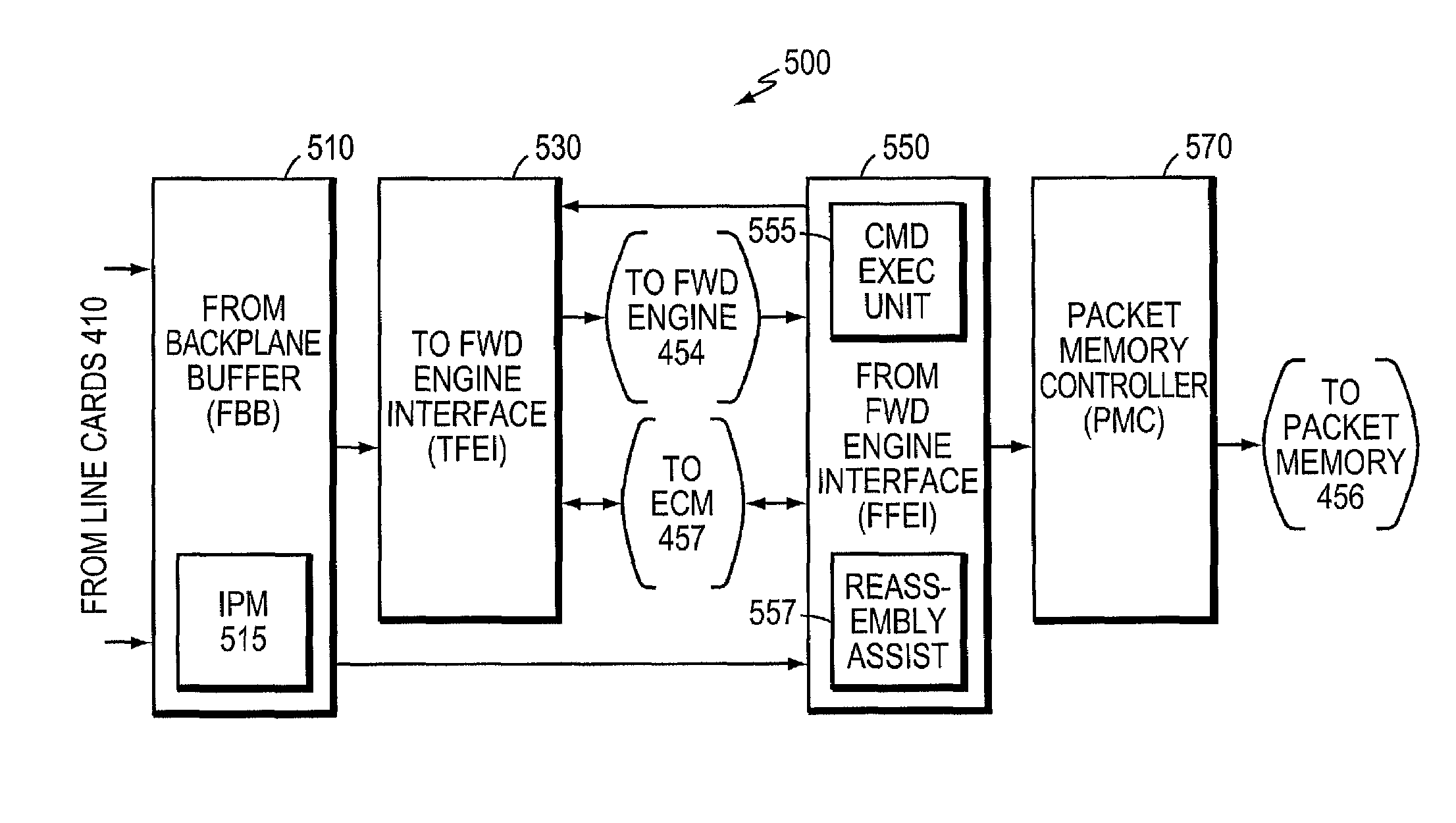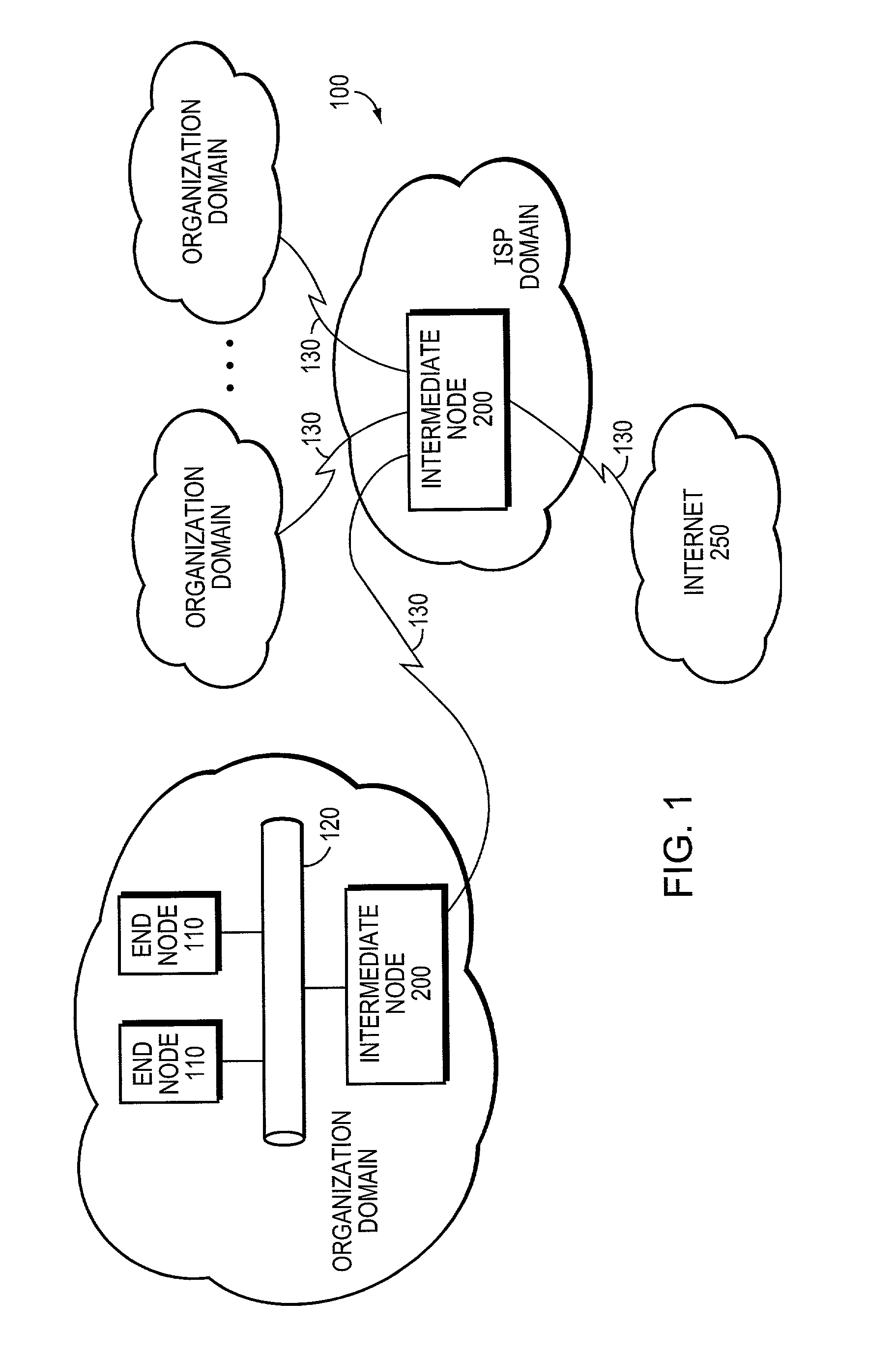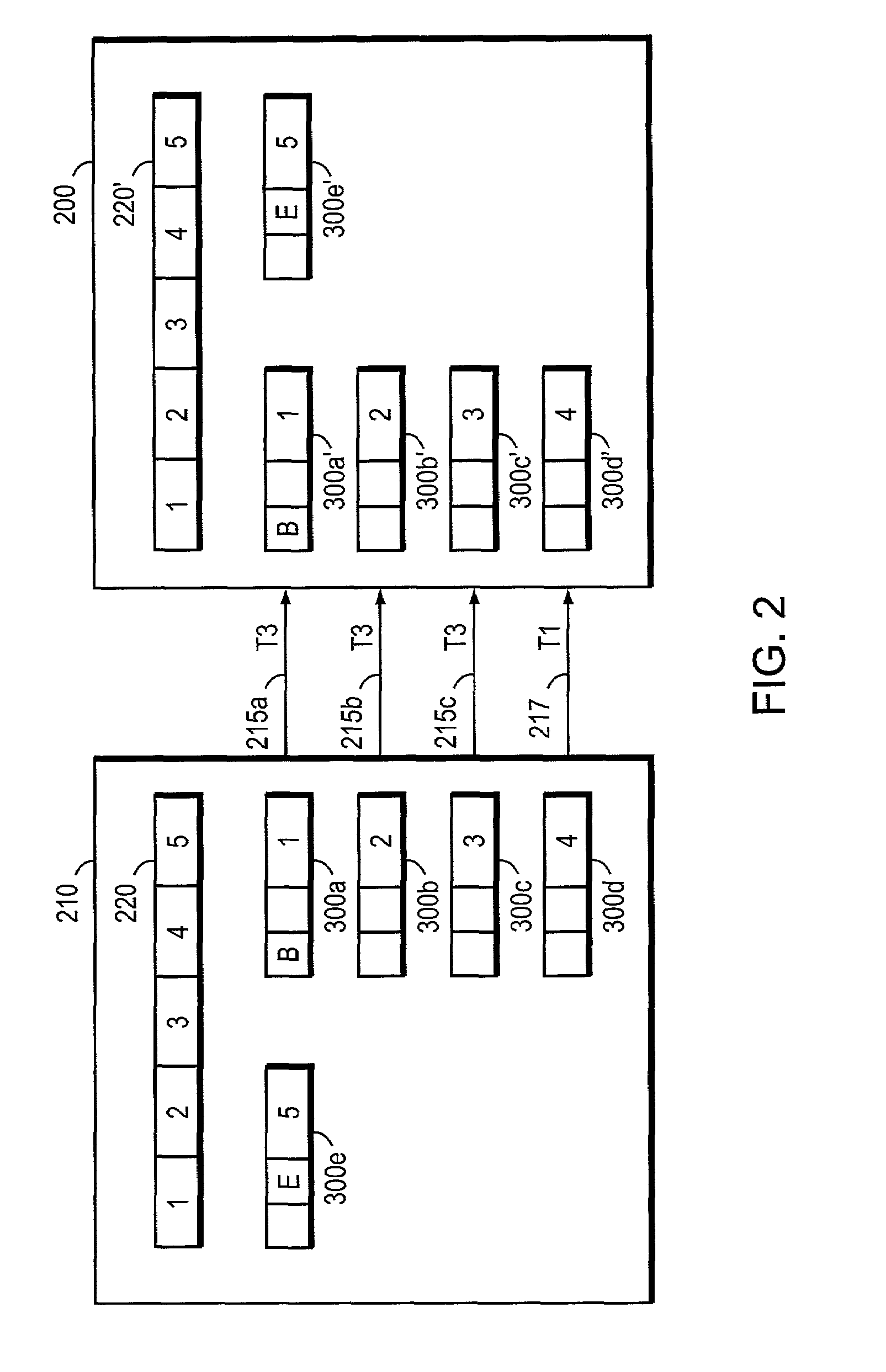Multi-link protocol reassembly assist in a parallel 1-D systolic array system
a multi-link protocol and reassembly assist technology, applied in the field of systolic arrays, can solve the problems of affecting packet throughput, affecting packet reassembly, and affecting packet reassembly,
- Summary
- Abstract
- Description
- Claims
- Application Information
AI Technical Summary
Benefits of technology
Problems solved by technology
Method used
Image
Examples
Embodiment Construction
[0027]FIG. 1 is a schematic block diagram of a computer network 100 comprising a collection of communication links and segments connected to a plurality of nodes, such as end nodes 110 and intermediate nodes 200. The network links and segments may comprise local area networks (LANs) 120 and wide area network (WAN) links 130 interconnected by intermediate nodes, such as network switches or routers, to form an internetwork of computer nodes. These internetworked nodes communicate by exchanging data packets according to a predefined set of protocols, such as the Transmission Control Protocol / Internet Protocol (TCP / IP). In addition, depending on the configuration and needs of the network, certain nodes may be configured to run one or more multi-link protocols to accommodate multi-link communication between internetworked nodes.
[0028]For purposes of illustration only, the detailed description of the illustrated embodiment is described in terms where the invention is used to process point...
PUM
 Login to View More
Login to View More Abstract
Description
Claims
Application Information
 Login to View More
Login to View More - R&D
- Intellectual Property
- Life Sciences
- Materials
- Tech Scout
- Unparalleled Data Quality
- Higher Quality Content
- 60% Fewer Hallucinations
Browse by: Latest US Patents, China's latest patents, Technical Efficacy Thesaurus, Application Domain, Technology Topic, Popular Technical Reports.
© 2025 PatSnap. All rights reserved.Legal|Privacy policy|Modern Slavery Act Transparency Statement|Sitemap|About US| Contact US: help@patsnap.com



